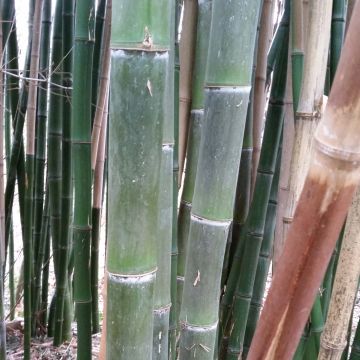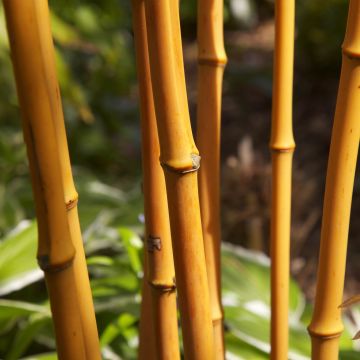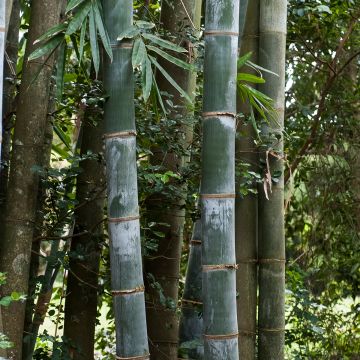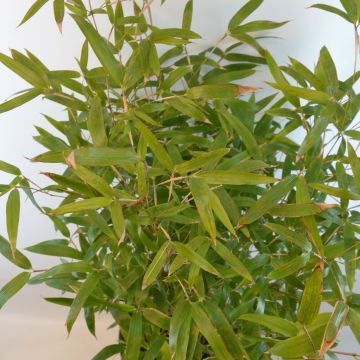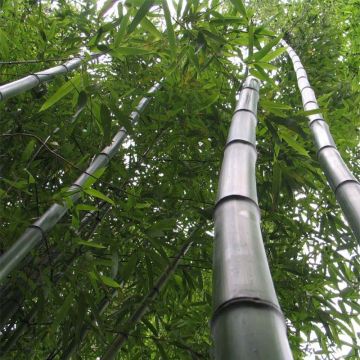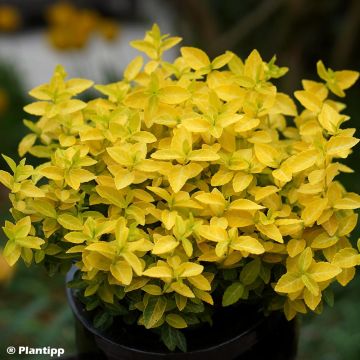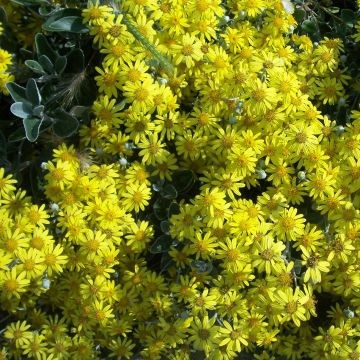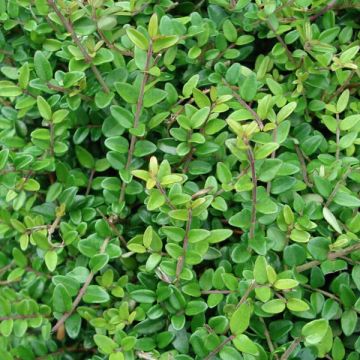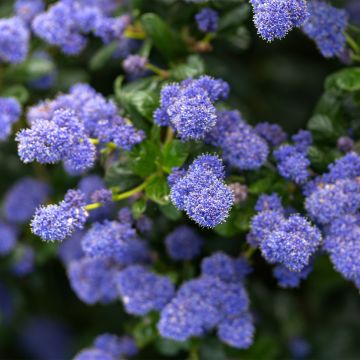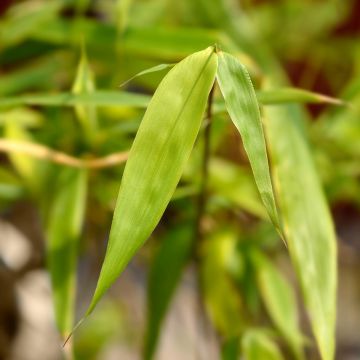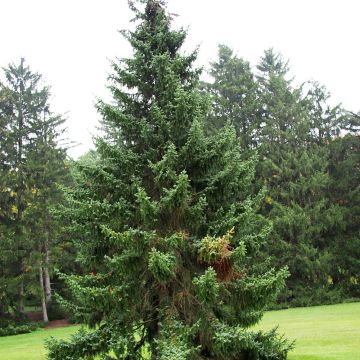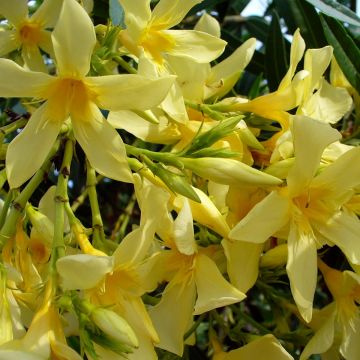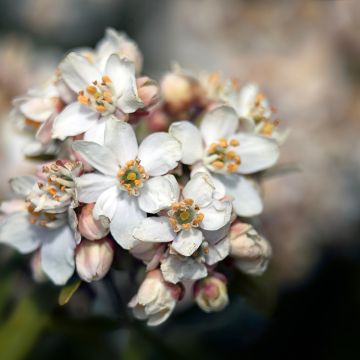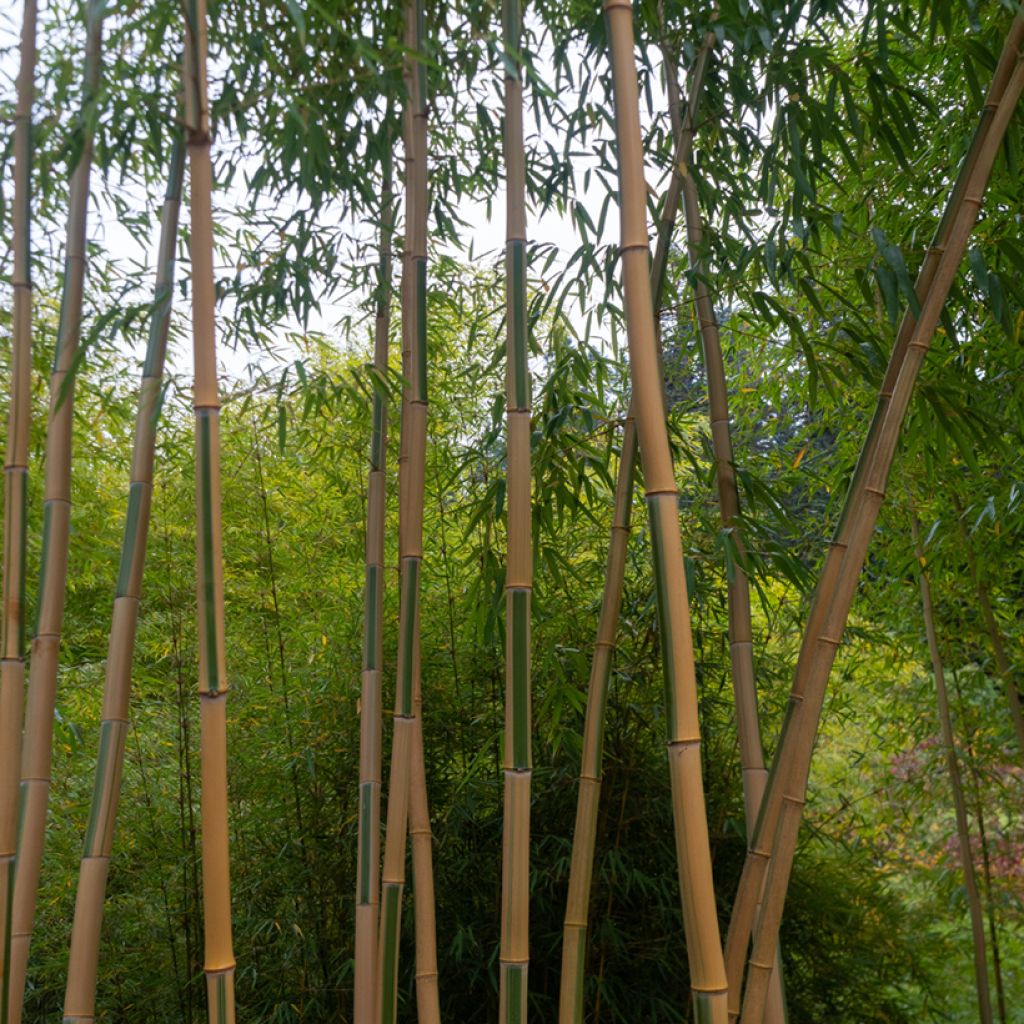

Phyllostachys aurea Koi - Fishpole Bamboo


Phyllostachys aurea Koi - Fishpole Bamboo
Phyllostachys aurea Koi - Fishpole Bamboo
Phyllostachys aurea Koï
Golden Bamboo, Fishpole Bamboo
Special offer!
Receive a €20 voucher for any order over €90 (excluding delivery costs, credit notes, and plastic-free options)!
1- Add your favorite plants to your cart.
2- Once you have reached €90, confirm your order (you can even choose the delivery date!).
3- As soon as your order is shipped, you will receive an email containing your voucher code, valid for 3 months (90 days).
Your voucher is unique and can only be used once, for any order with a minimum value of €20, excluding delivery costs.
Can be combined with other current offers, non-divisible and non-refundable.
Home or relay delivery (depending on size and destination)
Schedule delivery date,
and select date in basket
This plant carries a 24 months recovery warranty
More information
We guarantee the quality of our plants for a full growing cycle, and will replace at our expense any plant that fails to recover under normal climatic and planting conditions.

Would this plant suit my garden?
Set up your Plantfit profile →
Description
Phyllostachys aurea 'Koi' is a variety of bamboo highly appreciated for its beautiful yellow canes, enhanced by a green stripe between the nodes. These fairly thin and upright canes bear persistent light green foliage, giving it a very architectural appearance. This superb, medium-sized bamboo, will be perfect in a contemporary garden or to create a tropical scene, even though it is actually quite hardy. Growing in full sun or partial shade, it adapts to most moist and well-drained soils.
Originally from China and Japan, this bamboo belongs to the Poaceae family, better known by its former name of Gramineae. Despite its hard stems, which in the tropics can commonly reach heights of 20 or 30m (65ft 7in or 98ft 5in) (and up to 45m (147ft 7n) for a species of Dendrocalamus!), bamboo is a cousin of grasses and cereals, and not a tree. There are over a hundred genera of bamboo, including Phyllostachys, which is widely used in ornamental gardens.
Phyllostachys aurea is a species that forms dense clumps and has shallow and creeping rootstocks. These rootstocks produce straight and resistant canes that can reach 20 to 30m (65ft 7in to 98ft 5in) in their native regions, rarely more than 6 to 10m in our climates. It is characterized by stacked and compressed nodes, sometimes observable at the base of certain canes. These internodal growths are called "tortoise scales". The evergreen, narrow, lanceolate leaves, 17cm (6.7in) long, are grouped in dense clusters along the canes, whose colour varies depending on the variety.
In 'Koi', they are more or less golden yellow in colour depending on the exposure, with green stripes stretching between the nodes. This creates a very nice, decorative contrast of colours (the same contrast, but inverted, can be found in the variety 'Flavescens Inversa'). This creeping bamboo forms a clump of slender canes, with a diameter of 3 to 5cm (1.2 to 2in) and reaching 5 to 8m (16ft 5in to 26ft 2in) in height. Every year, taller canes than those of the previous year are produced and a plant quickly reaches a width of 2.50 to 3m (8ft 2in to 9ft 10in). It is therefore strongly recommended to limit its spread with a robust anti-rhizome barrier, making sure to have it protrude from the ground by 10cm (3.9in) to prevent any crossing. The light green foliage is very dense, giving this bamboo a graceful habit and a beautiful exotic appearance.
This Phyllostachys tolerates most soils, from acidic to limestone (pH 5 to 8), moist, but properly drained. It grows in sunny or partial shade locations, on the edge of large trees for example. While the rootstock is hardy to around -18°C, the foliage can suffer from -12°C, especially if exposed to the wind.
Bamboo is one of those plants capable of creating a distinctive atmosphere on its own. The highly architectural form of these plants makes them excellent subjects in a contemporary garden. 'Koi' will thus constitute a superb green curtain to enhance topiaries, such as Ilex crenata Dark Green, a holly with dark green foliage, which will contrast in terms of both colour and shape. In a Japanese-style garden, Acer palmatum Deshojo, a Japanese Maple with finely cut foliage and colours that change with the seasons, from bright red to orange through reddish green, will create a magnificent scene with this bamboo. To create a "tropical" scene, plant it alongside palms, such as the Dwarf Sabal (Sabal minor), a clump-forming species that creates low tufts with a particularly exotic appearance...
Report an error about the product description
Phyllostachys aurea Koi - Fishpole Bamboo in pictures
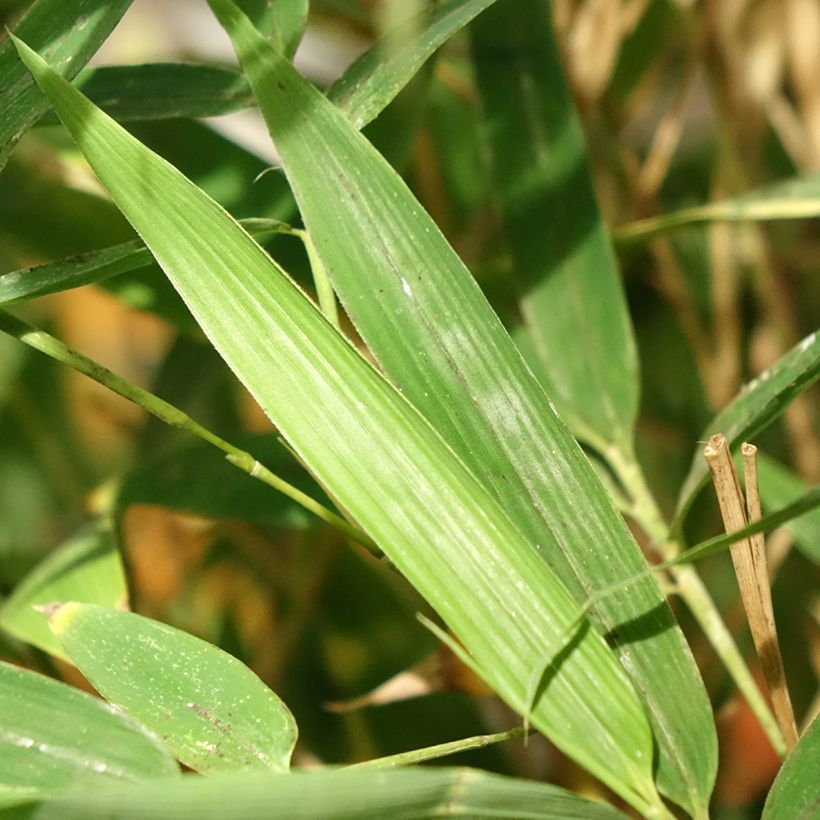

Plant habit
Foliage
Botanical data
Phyllostachys
aurea
Koï
Poaceae
Golden Bamboo, Fishpole Bamboo
Cultivar or hybrid
Other Phyllostachys
View all →Planting and care
Phyllostachys aurea 'Koi' should be planted in spring or autumn with some organic fertiliser. The ideal period is between September and November, when the plant develops its rootstock. Resistant to -18 °C, it grows in rich, deep, firm, moist soil in summer, but well-drained and not waterlogged, in sunny or lightly shaded position. Mulch the young plant and water generously. Apply nitrogen fertilizer in February-March, then in July-August. Divide old clumps in spring. It loses its leaves when the temperature drops below -12 °C, but the very resistant crown allows regrowth. Protect it from cold and dry winds in winter. Watch out for slugs that like young shoots. Limit the spread of the very creeping rootstock of this bamboo by installing "root barriers" when planting.
Planting period
Intended location
Care
This item has not been reviewed yet - be the first to leave a review about it.
Similar products
Haven't found what you were looking for?
Hardiness is the lowest winter temperature a plant can endure without suffering serious damage or even dying. However, hardiness is affected by location (a sheltered area, such as a patio), protection (winter cover) and soil type (hardiness is improved by well-drained soil).

Photo Sharing Terms & Conditions
In order to encourage gardeners to interact and share their experiences, Promesse de fleurs offers various media enabling content to be uploaded onto its Site - in particular via the ‘Photo sharing’ module.
The User agrees to refrain from:
- Posting any content that is illegal, prejudicial, insulting, racist, inciteful to hatred, revisionist, contrary to public decency, that infringes on privacy or on the privacy rights of third parties, in particular the publicity rights of persons and goods, intellectual property rights, or the right to privacy.
- Submitting content on behalf of a third party;
- Impersonate the identity of a third party and/or publish any personal information about a third party;
In general, the User undertakes to refrain from any unethical behaviour.
All Content (in particular text, comments, files, images, photos, videos, creative works, etc.), which may be subject to property or intellectual property rights, image or other private rights, shall remain the property of the User, subject to the limited rights granted by the terms of the licence granted by Promesse de fleurs as stated below. Users are at liberty to publish or not to publish such Content on the Site, notably via the ‘Photo Sharing’ facility, and accept that this Content shall be made public and freely accessible, notably on the Internet.
Users further acknowledge, undertake to have ,and guarantee that they hold all necessary rights and permissions to publish such material on the Site, in particular with regard to the legislation in force pertaining to any privacy, property, intellectual property, image, or contractual rights, or rights of any other nature. By publishing such Content on the Site, Users acknowledge accepting full liability as publishers of the Content within the meaning of the law, and grant Promesse de fleurs, free of charge, an inclusive, worldwide licence for the said Content for the entire duration of its publication, including all reproduction, representation, up/downloading, displaying, performing, transmission, and storage rights.
Users also grant permission for their name to be linked to the Content and accept that this link may not always be made available.
By engaging in posting material, Users consent to their Content becoming automatically accessible on the Internet, in particular on other sites and/or blogs and/or web pages of the Promesse de fleurs site, including in particular social pages and the Promesse de fleurs catalogue.
Users may secure the removal of entrusted content free of charge by issuing a simple request via our contact form.
The flowering period indicated on our website applies to countries and regions located in USDA zone 8 (France, the United Kingdom, Ireland, the Netherlands, etc.)
It will vary according to where you live:
- In zones 9 to 10 (Italy, Spain, Greece, etc.), flowering will occur about 2 to 4 weeks earlier.
- In zones 6 to 7 (Germany, Poland, Slovenia, and lower mountainous regions), flowering will be delayed by 2 to 3 weeks.
- In zone 5 (Central Europe, Scandinavia), blooming will be delayed by 3 to 5 weeks.
In temperate climates, pruning of spring-flowering shrubs (forsythia, spireas, etc.) should be done just after flowering.
Pruning of summer-flowering shrubs (Indian Lilac, Perovskia, etc.) can be done in winter or spring.
In cold regions as well as with frost-sensitive plants, avoid pruning too early when severe frosts may still occur.
The planting period indicated on our website applies to countries and regions located in USDA zone 8 (France, United Kingdom, Ireland, Netherlands).
It will vary according to where you live:
- In Mediterranean zones (Marseille, Madrid, Milan, etc.), autumn and winter are the best planting periods.
- In continental zones (Strasbourg, Munich, Vienna, etc.), delay planting by 2 to 3 weeks in spring and bring it forward by 2 to 4 weeks in autumn.
- In mountainous regions (the Alps, Pyrenees, Carpathians, etc.), it is best to plant in late spring (May-June) or late summer (August-September).
The harvesting period indicated on our website applies to countries and regions in USDA zone 8 (France, England, Ireland, the Netherlands).
In colder areas (Scandinavia, Poland, Austria...) fruit and vegetable harvests are likely to be delayed by 3-4 weeks.
In warmer areas (Italy, Spain, Greece, etc.), harvesting will probably take place earlier, depending on weather conditions.
The sowing periods indicated on our website apply to countries and regions within USDA Zone 8 (France, UK, Ireland, Netherlands).
In colder areas (Scandinavia, Poland, Austria...), delay any outdoor sowing by 3-4 weeks, or sow under glass.
In warmer climes (Italy, Spain, Greece, etc.), bring outdoor sowing forward by a few weeks.
































